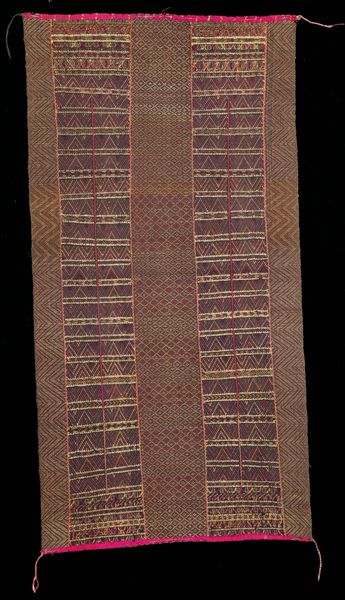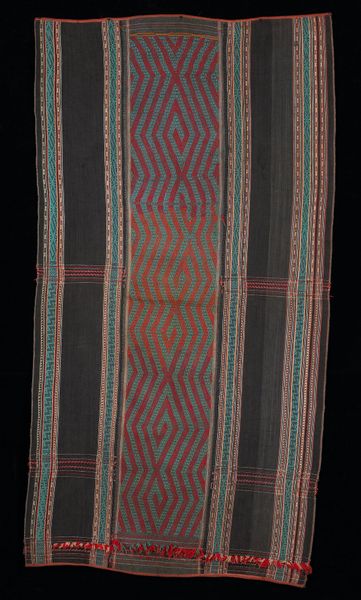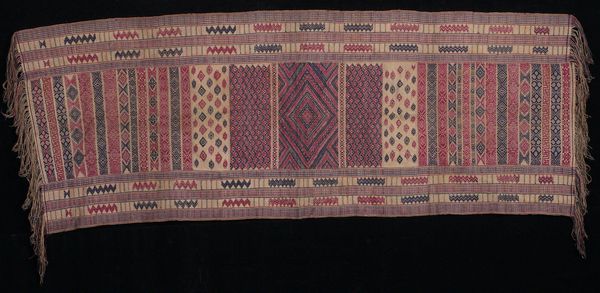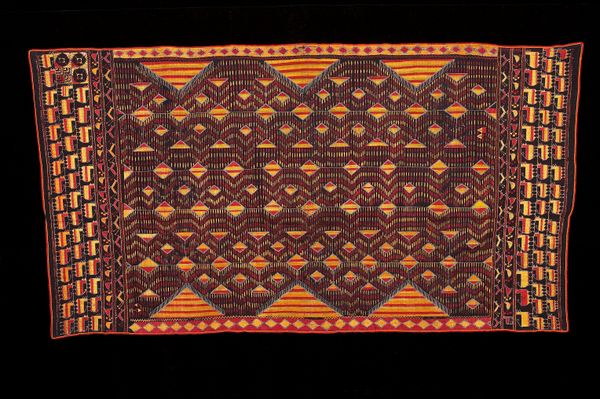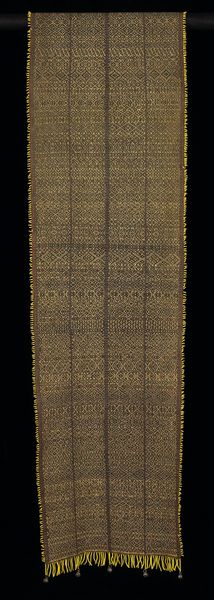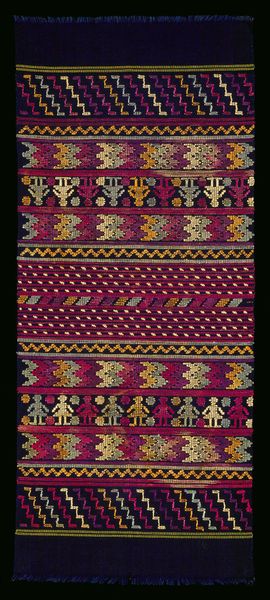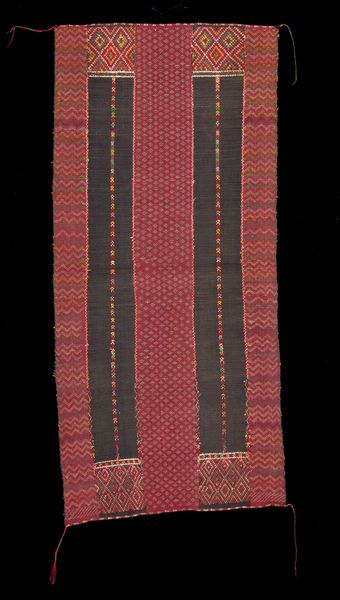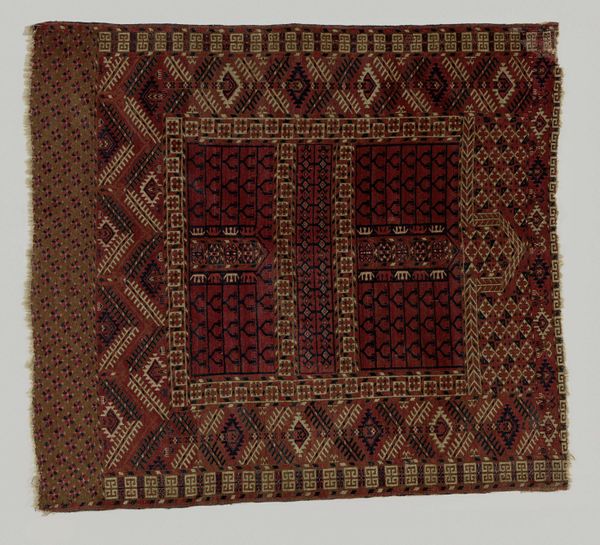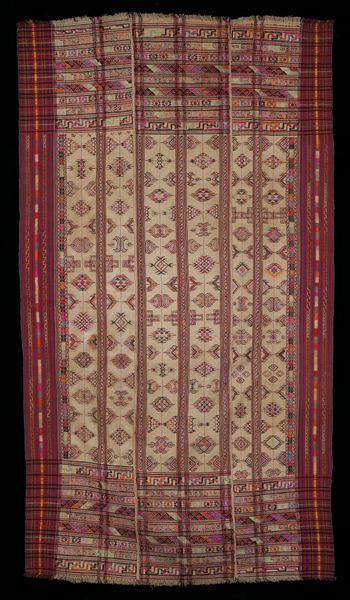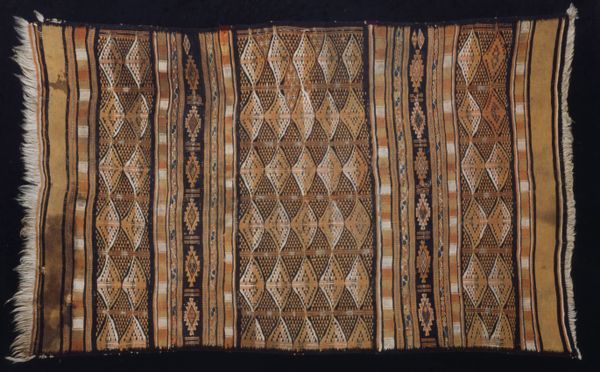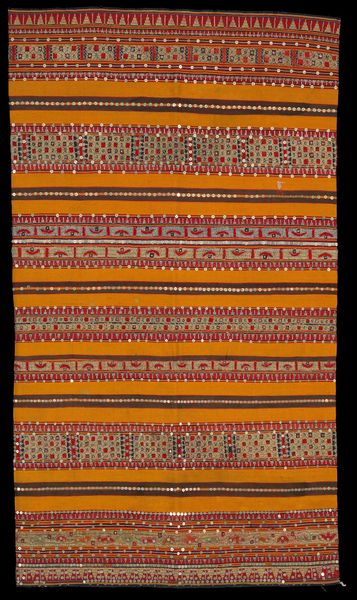
fibre-art, weaving, textile, cotton
#
fibre-art
#
pattern used
#
asian-art
#
weaving
#
textile
#
geometric pattern
#
abstract pattern
#
geometric
#
repetition of pattern
#
intricate pattern
#
regular pattern
#
pattern repetition
#
cotton
#
layered pattern
#
combined pattern
#
repetitive pattern
Dimensions: 28 5/8 x 13 5/8in. (72.7 x 34.6cm)
Copyright: Public Domain
Curator: Welcome. Today, we are considering "Myanmar," an anonymous textile weaving likely created in the 20th century. This cotton fiber art features an intricate composition of geometric patterns and is held here at the Minneapolis Institute of Art. Editor: You know, I’m immediately struck by the sort of quiet, almost contemplative mood it evokes. It feels like looking at a well-loved rug that holds untold stories in its fibers. Curator: Absolutely. Contextually, these types of textiles were—and in some places still are—deeply connected to social status and ritual practices. The intricate designs woven into the cotton cloth communicate a family or ethnic identity, their beliefs, and often the skills and artistry passed down through generations. Editor: And that deep, muted color palette… it really pulls you in. There's such a density of detail, but the subdued hues make it surprisingly calming. I almost want to reach out and feel the texture. Curator: Think about what that geometric abstraction might represent, particularly concerning the weaving’s connection to Buddhist symbolism and cosmological maps prevalent in Southeast Asian spiritual traditions. It may embody something profoundly linked to that maker’s world and community. Editor: That’s incredible. I was only sensing an aura, you know? The repetition creates a rhythm—visual chants. A sort of hypnotic, layered experience… but knowing the historical context enriches it all. Curator: And don’t forget the social implications of fiber arts often produced by women—unacknowledged artistry of female creation. These pieces become powerful reminders of not only skill and labor, but also the subtle power dynamics implicit in the art world, which typically values paintings, for instance, more highly. Editor: Okay, wow. You’ve officially made me rethink the simple cozy vibe I was getting! The material reality carries narratives. Curator: Indeed. We often overlook textiles as simple domestic objects. Yet in works like “Myanmar,” the woven patterns testify to much deeper social fabrics—intersecting with identities, economies, and historical conditions. Editor: It makes you want to spend hours decoding all those layers, right? Beyond the lovely visual patterns, there are actual worlds woven in. Curator: Precisely. It encourages a more empathetic view. Hopefully, it inspires curiosity toward the artistic expressions born of complex cultural conditions often far removed from our own. Editor: I am absolutely buzzing with ideas now! It is amazing what opens when you slow down and truly *see*.
Comments
No comments
Be the first to comment and join the conversation on the ultimate creative platform.
